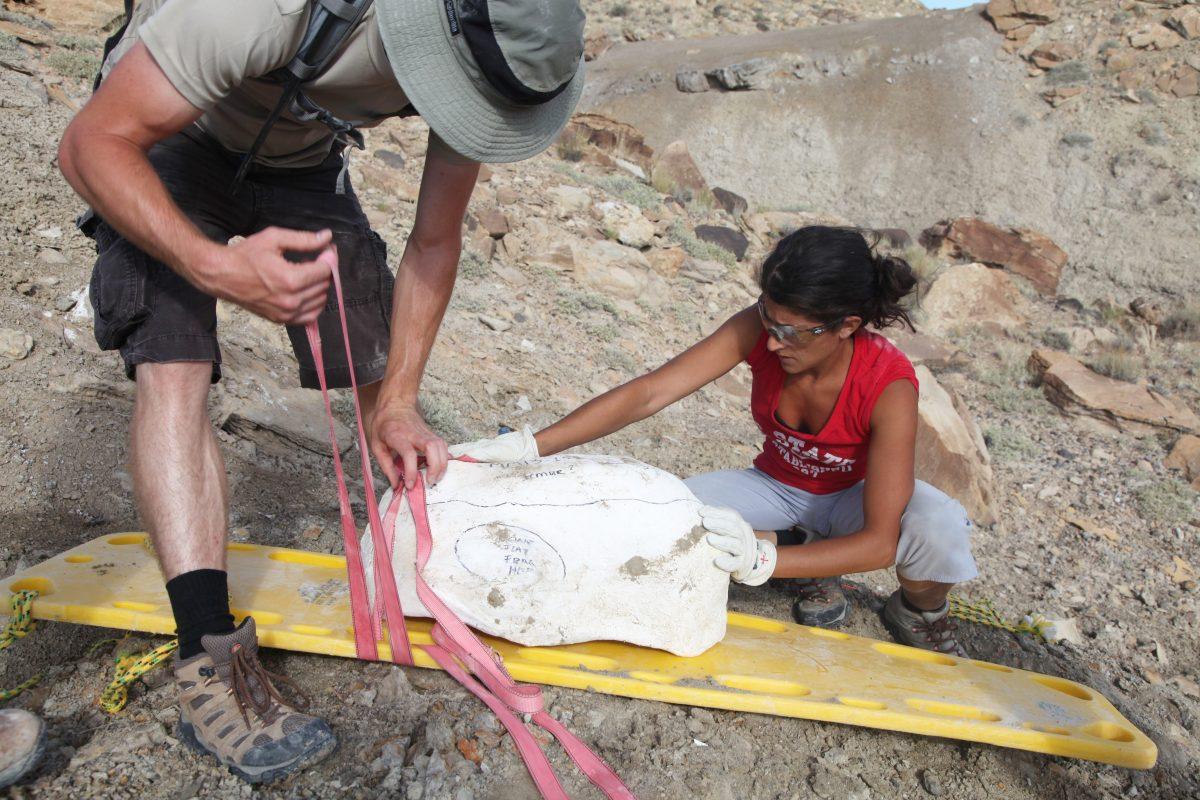Paleontologists from N.C. State discovered a giant carnivorous dinosaur that lived in North America 98 million years ago, shedding new light on evolution and filling gaps in history.
Lindsay Zanno, an associate professor of biology and the director of the Paleontology & Geology Research Laboratory, originally discovered the dinosaur, known as Siats meekerorum or Siats for short. Zanno made her discovery in 2008 in the Cedar Mountain Formation, which is located in the southeastern part of Utah.
The specimen was 30 feet long, weighing about 9,000 pounds at death. Some estimates suggest that an adult Siats was 11,000 pounds and may have been as big as Acrocanthosaurus, which was up to 38 feet long.
“I was headed to the Chicago Field Museum to do a postdoctoral fellowship there, and we decided to look area in Utah for new dinosaurs,” Zanno said. “In our first few days there we stumbled upon the Siats.”
Zanno said she targeted rocks in a 60 million gap from the Jurassic to early Cretaceous periods in order to find the location of where a fossil might be.
“We have a 60 million year gap in Western North America during which we didn’t know who the reigning predators were,” Zanno said.
This makes this the first discovery of a large carnivorous dinosaur in 63 years in North America. Previous discoveries were the Tyrannosaurus rex and the Acrocanthosaurus.
Zanno said it took two years to fully excavate the dinosaur, and most of the work was done in the summer when temperatures easily reached 120 degrees.
According to Zanno, the excavation site ended up being the size of a swimming pool. After the excavation, it took another year to remove the rock around the bones so the bones could be studied.
Zanno worked with Peter Makovicky from the Chicago Field Museum of Natural History during the discovery, excavation and research.
“When we found the remains, we knew it was a large predator, so that was exciting for us,” Zanno said. “It wasn’t until we finished doing the research that we found that we had the first type of this predator in North America. The Siats is part of a group that is known from Europe and Asia but it had never been found here in North America.”
Zanno said the fossil is only 20 percent complete but it is providing a surprising amount of information.
“The specimen that we have of Siats is a juvenile individual, and we know that because the bones in the skeleton are not fused together, telling us it was still growing,” Zanno said.
The discovery proved significant in answering some questions about how the Tyrannosaurus rex came to be one of the top predators millions of years later, according to Zanno.
“We also found teeth of a very little precursor to the Tyrannosaurus rex, and it was clear they couldn’t compete with animals like Siats during that time,” Zanno said.
Siats and its close relatives went extinct in the late Cretaceous period, opening a niche for the Tyrannosaurus rex to evolve to a larger size. When Siats lived in North America, the Tyrannosaurus rex was about the size of a large dog.
“The significance comes from understanding what happens when animals are removed from the ecosystem and how it affects the ecosystem and how the ecosystem recovered,” Zanno said.
According to Zanno, there have been five mass extinctions so far, and we may be currently experiencing the sixth mass extinction.
“Species are disappearing from the planet so fast it’s on par with a mass extinction,” Zanno said. “We are seeing top predators becoming endangered. Siats is an example of top predators disappearing and what happens after.”
Some of the possible causes of the current extinction could be the result of human intervention and alterations to the ecosystems and landscapes.
Siats was not the only dinosaur discovered in the area. Every year since 2008, Zanno and several graduate students go to Utah during the summer to work on new discoveries, leading to the founding of N.C. State Field Paleontology Summer School.
“There are new species that have never been discovered before, and that’s what I am working on right now,” Zanno said. “It’s fun. One of the dinosaurs we found is a probable plant eater, but they aren’t as large as Siats. We are curious why there was only one large predator at the time. In the late Jurassic, which was 50 million years before Siats, there were many big predators. When Siats lived, there was only one big guy. We would like to know why the pattern of top predators changed through ecosystems and time.”








